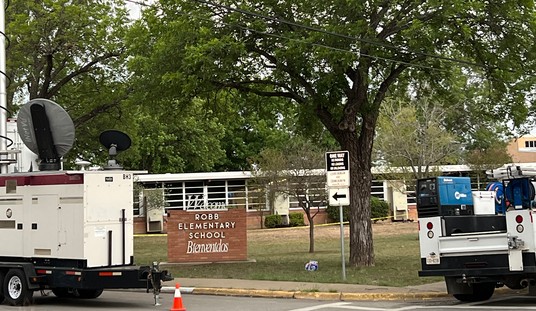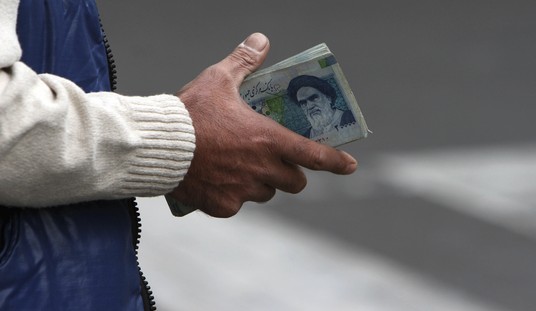Even Russia, Iran’s partner and their biggest ally at the UN on this subject, has lost patience. Expect a third round of feeble UN sanctions soon, commensurate with the fact that weaponization is a red herring and of little consequence at this point. As HA readers already know, building a bomb isn’t the hard part; the hard part is learning how to enrich uranium to bomb-grade levels, and that process continues apace. Worrying about whether their program is dormant or already up and running is like worrying about whether the gun pointing at you is loaded or about to be loaded. You’ve got a tiny bit more time with the latter but it’s the moment of truth either way.
Since 2005, the I.A.E.A. has urged the United States and other countries to allow the agency to confront Iran with evidence obtained on a laptop computer that once belonged to an Iranian technician with access to the country’s nuclear program. But the U.S. refused until a few weeks ago, and only agreed on Feb. 15, the report said, to allow original documents to be shown to the Iranians. In the report issued Friday, the agency described some of that evidence in public for the first time, “all of which the Agency believes would be relevant to nuclear weapon R & D.”
The most suspicious-looking document in the collection turned over to the I.A.E.A. was a schematic diagram showing what appeared to be the development of a warhead, with a layout of internal components. “This layout has been assessed by the agency as quite likely to be able to accommodate a nuclear device,” the I.A.E.A. wrote. But that does not prove it was a nuclear warhead, and Iran argued that its missile program used “conventional warheads only.”
The report referred to other documents drawn from the laptop — though the source of the material was never mentioned — that included documents describing how to test “high-voltage detonator firing equipment” and technology to fire multiple detonators at one time, which is required to trigger a nuclear reaction by forcing a nuclear core to implode. The report also described work on whether a detonation could be triggered in a 400-meter-deep shaft from a distance of 10 kilometers, or about six miles, leading to suspicions that the Iranian scientists were already thinking about nuclear testing. But it is unclear whether the shaft would have been wide enough for a nuclear weapon.
Iran claims the evidence is fabricated. Via Moran, go see how credible the experts at Arms Control Wonk find their denials. The only way out, they claim, is with direct negotiations that would allow Iran to suspend the program while saving face. Exit question: Why wouldn’t Iran just continue the program in secret?







Join the conversation as a VIP Member